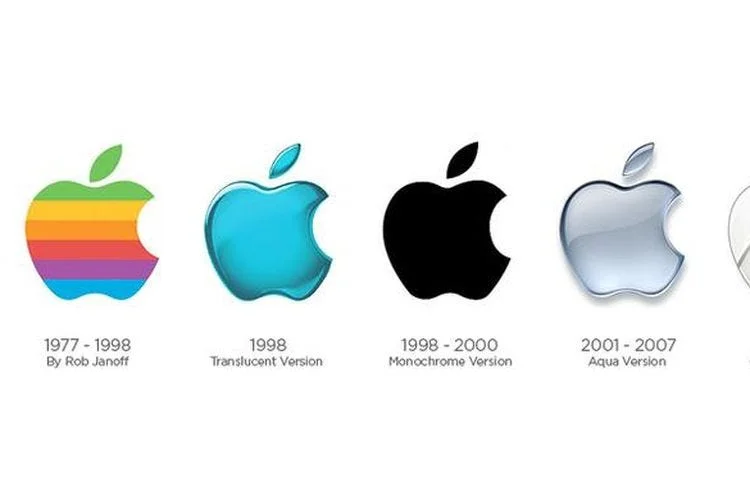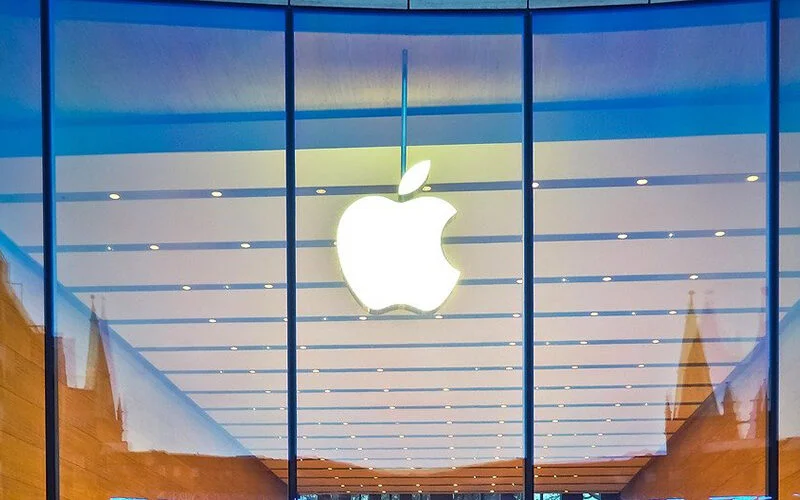The history of Apple Inc. is one that dates back to the 1970s and has had a major influence on consumer technology and personal computing worldwide.
Since its incorporation in 1977, the company has been at the forefront of technological advances, introducing revolutionary products such as the Macintosh, iPod, and iPhone which have transformed how people interact with digital devices today.

This article will explore Apple’s history from its roots in Silicon Valley up to the present day, detailing some of its key milestones along the way.
READ ALSO: The History of Tesla Motors
The Founding Of Apple Inc.
In 1976, Steve Jobs and Steve Wozniak founded Apple Inc. in the garage of Jobs’ family home in California. The two pioneers were only 21 years old at the time, but their company would soon become one of the most valuable technology companies ever created.
According to Forbes Magazine, Apple’s market capitalization exceeded $2 trillion USD on August 19th, 2020 – a remarkable feat that solidifies its place in history as an unstoppable tech titan.
Jobs and Wozniak had little formal education between them when they started out; however, due to their ambition, creativity, and drive for success they managed to create a range of successful products that revolutionized computing forever.
Their first product was the Apple I computer which sold for just $666.66USD – an indication of their creative approach even from early on.
This initial success led to Apple releasing more innovative products like the Apple II series which introduced color graphics into personal computers through its revolutionary high-resolution display capabilities.
The next major milestone for Apple came with the introduction of the Macintosh in 1984 – a ground-breaking device that featured user-friendly graphical displays and interactive mouse input.
It marked the beginning of mass adoption of GUI interface technologies throughout all industries including multimedia, gaming, entertainment, and business applications – paving the way for a new era in computing accessibility worldwide.
By this point, there was no denying that Apple had made its mark on technological evolution and was ready to take it on to bigger things.
The Macintosh Revolution
The Macintosh Revolution is a significant chapter in the history of Apple Inc. It was launched in 1984 with an iconic ad during the Super Bowl, and it set off a chain of events that changed how people used computers.
The Mac OS X operating system formed the foundation for many later developments at Apple, including its famous iPod music player and iTunes media store.
Steve Jobs returned to Apple in 1997 after having been forced out 12 years earlier. He vowed to make several changes, one of which was revitalizing the Macintosh platform.
Under his direction, the company created new versions of their Mac OS X platform over the following decade: from 10.0 until 10.6 Snow Leopard was released in 2009.
This period saw increased compatibility between Macs and other devices such as iPhones and iPads, making them even more popular among consumers worldwide who wanted both convenience and reliability from their computing experience.

These advancements allowed users to take full advantage of digital media like photographs, videos, audio files, and documents stored on hard drives or external storage devices easily managed by Apple’s software products.
As technology advanced rapidly through these years, so did Apple’s computer platforms; they became much faster processors with larger memory capacities than ever before seen on personal computers up until this time.
They also had better graphics capabilities which enabled vibrant color displays creating attractive visuals without sacrificing quality or speed while running applications such as video games and photo editing programs.
This marked shift towards user-friendly interfaces combined with powerful hardware made using a Mac easier than ever before allowing greater access to complex tasks normally reserved for professional use only previously available on Windows PCs.
By leveraging what was possible technologically within the consumer market space during this era to create innovative computer systems, Steve Jobs guided Apple into becoming one of the most successful companies in history still today two decades later since his return as CEO of Apple Inc..
Transcending beyond just being revolutionary within the sector itself but rather revolutionizing how people interacted with computers entirely thereby changing culture forevermore across generations around the world…
The iPod And Itunes
The iPod and iTunes revolutionized the music industry in 2001, as Apple Inc. introduced a product that changed how consumers interacted with their music.

The iPod allowed users to carry thousands of songs digitally on one device, eliminating the need for bulky physical media such as cassettes or CDs.
In addition to the hardware, Apple launched its popular iTunes software which enabled individuals to organize digital music files and purchase songs online from an expansive library at reasonable prices.
This was especially significant given the prevalence of digital piracy up until this point; users could now easily access legitimate content without resorting to illegal services.
Apple continued innovating with subsequent versions of the iPod, including revolutionary products like the iPod Shuffle and Nano which were smaller than traditional iPods but still contained massive amounts of storage space.
Additionally, they provided additional features such as color displays and other multimedia capabilities not previously available on any portable audio player before it.
As more people began buying these devices and downloading content exclusively through iTunes, Apple solidified its place as a leader in consumer electronics.
As demand for increasingly powerful mobile technology increased over time, Apple responded by launching even more groundbreaking products in rapid succession: first came the iPhone followed shortly after by the iPad and later iterations incorporating larger screens with retina display quality resolutions capable of running apps designed specifically for each platform.
These advancements further cemented Apple’s position within both the tech world and society at large due to its ease of use coupled with cutting-edge innovation.
With new iPhones being released annually alongside yearly updates to existing models, there is no sign of slowing down anytime soon as consumers continue embracing these advances in mobile technology…
READ ALSO: Tesla’s Electric Vehicle Technology
The iPhone And Ipad
The introduction of the iPhone in 2007 and the iPad in 2010 forever changed Apple Inc.’s place within the technology industry.
With these two devices, the company revolutionized both the smartphone and tablet markets, introducing features that allowed for unprecedented levels of personal computing power in a portable device.

The intuitive design of their touch interfaces paired with high-quality hardware components made them instant hits with tech consumers around the world. In order to further capitalize on this market demand, Apple followed up with multiple iterations and advancements as part of its product refresh cycles over the next decade.
As technological advances such as faster processors, larger screens, and improved camera resolutions became available, Apple was quick to incorporate these into its products in order to stay ahead of competitors and satisfy customer needs.
This move enabled it to remain at the forefront of innovation while maintaining an impressive degree of popularity among users throughout the years.
Apple’s success in this area has been due largely to its ability to keep pace with rapid advancement in mobile technology while providing customers with a reliable user experience across all generations of iPhones and iPads.
Moving forward, this will remain an important factor as competition rises from other companies vying for a share of this lucrative market segment. From here, we can turn our attention toward how Apple approaches retail strategy through its own stores and online presence.
Apple Stores And Retail Strategy
Apple Inc. has been at the forefront of retail innovation since its introduction of the Apple Store in May 2001.
The first store opened in Virginia, and the company has since expanded its retail locations to over 500 stores in 25 countries.
Apple’s retail expansion strategy has been characterized by a focus on high-end locations in major cities, as well as a focus on customer service experience through its Genius Bar and product workshops.
Apple Stores have become a destination for customers to experience the company’s full range of products and services, and have become a hallmark of Apple’s retail strategy.
Apple Store Locations
Apple Inc. has always been a leader in retail strategy, and its store locations are no exception. The company’s stores have made news headlines for their innovative designs since the first Apple Store opened in Tyson’s Corner Center in Virginia on May 19th, 2001.
The team behind the design of each store works hard to provide customers with an enjoyable shopping experience while also creating something unique through layout, lighting, and materials used within the space.
Apple Stores offer various features that create customer loyalty such as Genius Bar appointments and workshops so customers can learn more about their products. Furthermore, they often feature high-end displays showing off all of the latest devices and accessories which helps entice shoppers into buying them right away.
Additionally, the traditional store models were tested by incorporating interactive elements like touch screens and iPads; this allowed customers to try out different products without having to wait until they got home before being able to do so.
These strategies emphasize convenience, accessibility, engagement, and ease of use for Apple’s loyal customers; this helps promote brand visibility when potential customers pass by a location or hear from friends/family who has visited one recently.
All these factors combined resulted in Apple becoming increasingly prominent in today’s market due to its strong focus on retail strategy and store designs.
Apple Retail Expansion Strategies
Apple Inc. has long been a leader in retail strategy, and its expansion strategies have enabled it to reach more customers than ever before.
In recent years, the company has focused on branding strategies that emphasize the unique design of its stores as well as convenience for shoppers.
Apple also launched an online presence to better serve customers who are unable to visit one of their physical locations. This included creating digital versions of many products like iTunes and App Store which allowed customers to access content from anywhere with internet access.
Additionally, they developed an e-commerce platform so customers could purchase items directly from their website instead of having to go into a store. All these efforts helped expand Apple’s global footprint while providing more opportunities for sales and increased brand visibility.
Software And Services
In its rise to become one of the world’s largest and most profitable companies, Apple Inc. has not only modernized devices like the iPhone but also revolutionized software and services with innovative technologies.
Its venture into the digital age began in 2011 when the company unveiled its AI assistant Siri as a feature of iOS 5, marking a new era for user interactivity with computers. Since then, Apple has continued to expand its range of offerings through cloud storage solutions such as iCloud Drive and apps including iWork and GarageBand.
The company’s suite of applications provides users with more control over how they manage daily tasks on their devices. For example, Keynote is an app that lets people create visually stunning slideshows or presentations quickly and easily from any device.
Pages enable them to write documents collaboratively regardless of location while Numbers allow users to organize data into spreadsheets and charts.
Apple offers even more ways for customers to make use of its products beyond simple document management. Through features such as FaceTime Audio & Video Conferencing Calls customers can stay connected no matter where they are; HomeKit helps turn smart homes into reality; and Apple Music streams millions of songs so users never miss a beat.
These tools provide convenience and flexibility essential for everyday life in our current technological landscape. Moving forward, Apple continues to develop its capabilities in order to bring greater value to consumers everywhere.
READ ALSO: Software Design Patterns
Apple Music And Tv+
Apple Inc. is a multinational technology company that has been developing, manufacturing, and selling consumer electronics, computer software, and online services since the late 1970s. In 2019, Apple further expanded its product portfolio to include music streaming with Apple Music and video streaming with TV+.
Apple Music was launched in 2015 as a cloud-based subscription service offering over 50 million songs. It includes access to custom radio stations, artist exclusives, concert streams, and more than 100 music videos.
The service also provides an ad-free listening experience across multiple devices including Mac computers, iPhones, iPads, and iPod Touch devices.
TV+ was introduced by Apple in November of 2019 and offers high-quality original content from award-winning directors such as Steven Spielberg, Oprah Winfrey, and J.J Abrams among others.
Subscribers have access to additional titles like documentaries, kid’s shows, and feature films on various platforms including smart TVs, laptops, or mobile devices at no extra cost.
| Feature | Description |
|---|---|
| Music Streaming | Access to over 50 million songs plus custom radio stations |
| Video Streaming | High-quality original content from award-winning directors plus documentaries & Kid’s Shows |
Apple’s expansion into wearables and home automation continues its attempt to diversify its product offerings for consumers around the world.
Apple’s Expansion Into Wearables And Home Automation
Apple Inc. has long been known for its innovative and cutting-edge technology, and the company’s expansion into wearables and home automation is just one more example of this trend.
But how did Apple become a leader in these areas? With what vision did they move forward to create devices that are now ubiquitous within our homes and on our bodies?
The journey began with their smartwatch: the Apple Watch. Released in 2015, it was quickly embraced by consumers who were eager to have access to health-tracking data right from their wrists without needing to carry around multiple bulky devices.
As time went on, improvements such as cellular connectivity meant that users could stay connected even when away from their phones. The success of the watch paved the way for other wearable tech products such as AirPods earbuds and fitness trackers.
Apple also ventured into home automation with the HomePod speaker system which integrates voice control through Siri so people can conveniently manage tasks like setting timers or playing music throughout their house simply by speaking aloud.
This product provided an easier way for people to enjoy entertainment while also controlling their smart home appliances remotely with ease.
Moreover, since then, Apple has worked hard towards creating accessories that enable easy setup and integration with all types of existing smart home systems, making them accessible to everyone looking to make life at home simpler yet more entertaining.
READ ALSO: Virtual Reality Gaming
Frequently Asked Questions
What Is Apple’s Current Market Capitalization?
Apple Inc. is currently the most valuable company in the world with a market capitalization of about two trillion dollars as of May 2021.
It achieved this accomplishment through its diversification strategies and brand loyalty, which have been developed over decades since Apple was founded in 1976 by Steve Jobs and Steve Wozniak.
In addition to iPhones and other consumer electronics, Apple has also successfully branched out into services such as music streaming and cloud storage.
The growth of these businesses helps explain why Apple is so highly valued at present.
What Is The Current Value Of An Apple Share?
Apple Inc. has come a long way since its humble beginnings in the late 1970s, with one share of stock being worth less than $2 at the time.
Today, Apple’s market capitalization is staggering and so too is the value of an individual share; currently valued at around $129, it can be likened to a hot cake that everyone wants a piece of due to their impactful products over the years and continuous growth.
This price point reflects Apple’s standing as one of the most successful tech companies in history.
Who Are The Current Members Of Apple’s Board Of Directors?
The current members of Apple’s Board of Directors are:
– Arthur D. Levinson, Chairman
– James A. Bell, former CFO and Corporate President of The Boeing Company
– Tim Cook, Chief Executive Officer (CEO)
– Al Gore, former Vice President of the United States
– Robert A. Iger, Senior Advisor to the Director at The Walt Disney Company
– Andrea Jung, Global Chair and CEO Emeritus of Avon Products Inc.
– Ronald D. Sugar, Ph.D., former Chairman and Chief Executive Officer of Northrop Grumman Corporation
– Sue Decker, Former President of Yahoo! Inc.
– Jeff Williams, Chief Operating Officer (COO) of Apple Inc.
– Edward J. Wehmer, Founder & CEO of Wintrust Financial Corporation
These individuals bring a wealth of expertise in investment strategy as well as long-term corporate culture development to their roles on the board which has allowed them to continue leading Apple into success over its four decades plus history.
What Is The Total Number Of Apple Products Sold Worldwide?
Apple Inc. has enjoyed remarkable success with its products, and the numbers speak for themselves – over 1 billion Apple products have been sold worldwide.
This impressive figure is a testament to Apple’s impact on the global market, as well as its innovative approach and dedication to providing top-quality goods for consumers.
As a historian of Apple Inc., this number is nothing short of astounding – it showcases how far the company has come since its inception in 1976 and serves as a reminder that they are still going strong today.
How Much Money Has Apple Invested In Research And Development?
Apple Inc. has invested heavily in research and development (R&D) spending throughout its history, with investments increasing significantly since the year 2000.
This increase is largely due to Apple’s shift from producing hardware products to focusing more on innovation strategies such as software engineering, user experience design, and artificial intelligence technologies.
In 2019 alone, Apple reported expenses of $14.9 billion for R&D, indicating a significant commitment to continuing to invest in new product lines, services, and technology advancements.
Conclusion
The success of Apple Inc. is impressive and unparalleled in the tech industry, with a current market capitalization of over $2 trillion and an individual share value of nearly $400 dollars.
The company has been able to maintain its competitive edge through extensive research and development investment totaling over $60 billion since 2007, as well as by continuing to innovate with products such as the iPhone, iPad, and Macbook.
This strategy has enabled them to grow from selling only 2 million units worldwide in 2008 to 1.65 billion units in 2020 – one for every four people on Earth!
Apple’s board of directors consists of experienced executives who have contributed greatly to the growth of the business, helping it become one of the most successful companies in history.
With their experience and guidance, Apple continues to be a leader in innovation while still delivering high-quality products that meet customer expectations.
It is clear that Apple’s leadership team understands how important it is to remain ahead of competitors while still providing customers with quality options.
As they continue to expand their presence globally, Apple will undoubtedly remain at the forefront of the tech industry for years to come.
Thank you for reading our article today! Please remember to share this article on social media to help others benefit too. It also helps us improve our algorithm and relevance to the public. Thanks for Sharring!!! Follow us on Socials: Facebook - LinkedIn - Twitter









